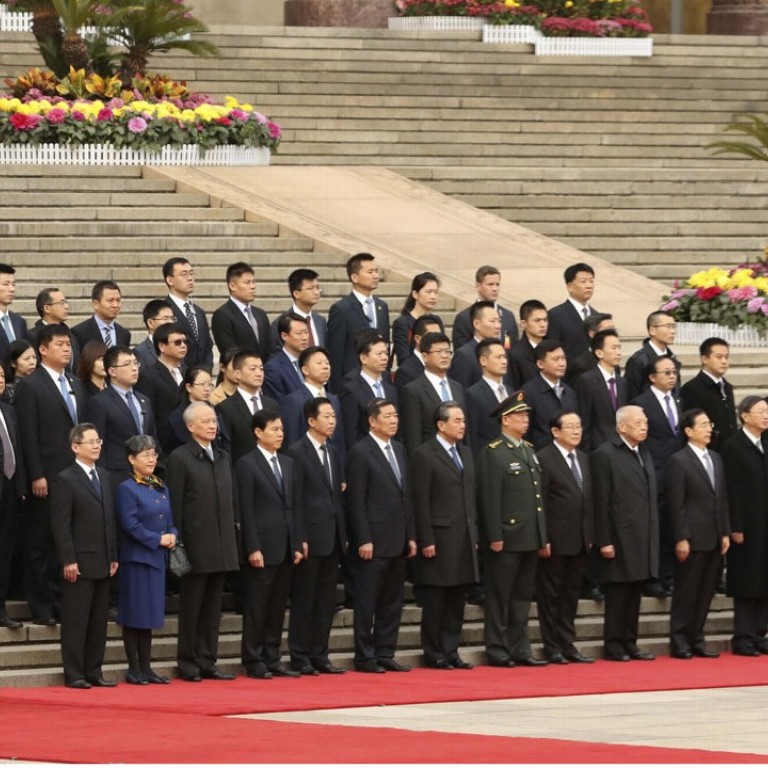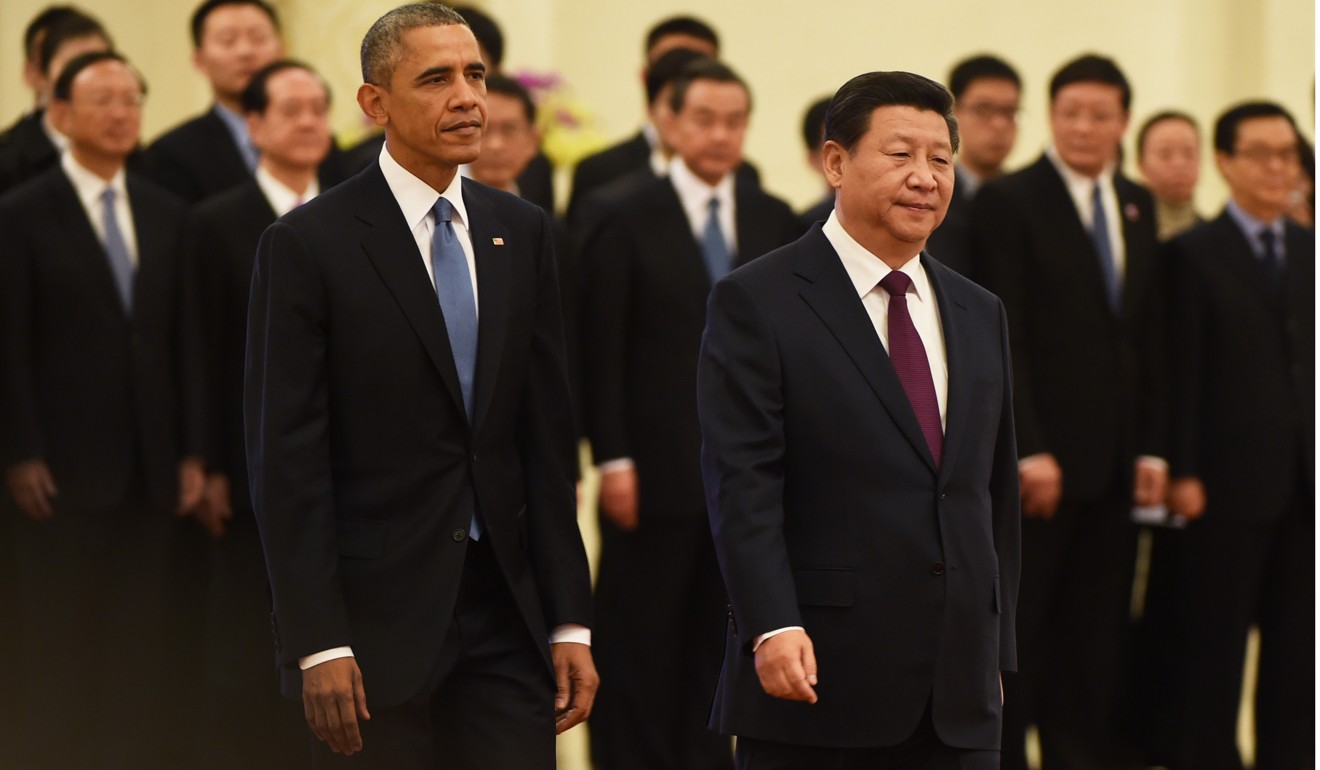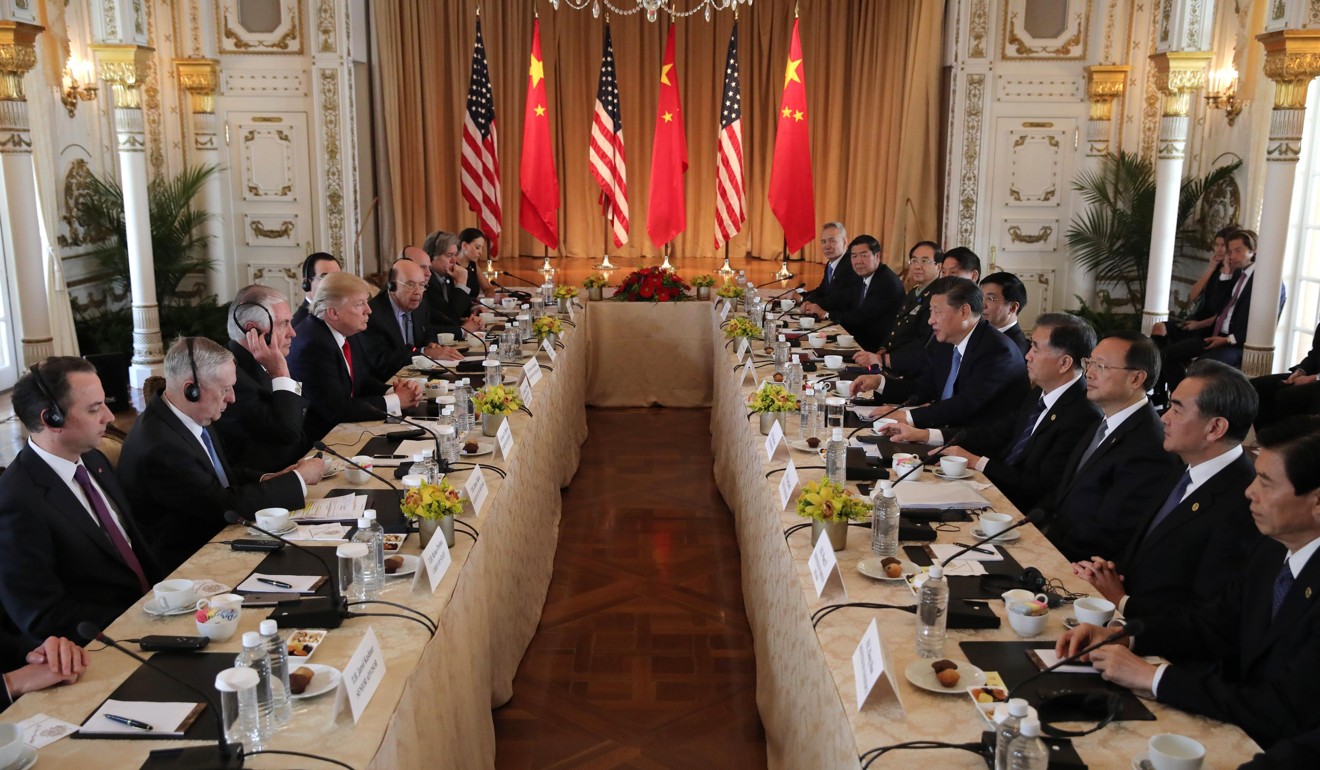
Receiving line for Donald Trump offers a rare glimpse of Beijing’s strategic US relations team
The welcome ceremony for visiting US president shone light on the central figures who will help China shape relations with the US over the next five years
As US President Donald Trump stepped out of a car outside the Great Hall of the People for a welcoming ceremony on Thursday morning, a line of Chinese officials standing on the red carpet rolled out before a flight of imposing stairs waited to greet him.
The presence of this group of top officials, whose hands Trump shook one by one, shed light on who the central figures will be who will help shape China’s relations with the US over the next five years.
Whereas in the Trump administration key China officials usually hold a state title, the circle of officials around President Xi Jinping who have a real say in China’s US policies – or foreign policy in general – may seem shrouded in haze to outsiders. Some only hold a senior position in the party and may not have an impressive government title, making it hard for foreign parties to locate the right channel or counterpart.
Trump’s arrival at the Great Hall offered the first public glimpse since the ruling Communist Party reshuffled its senior leadership last month of the Chinese team that will take care of Sino-US ties.
Among the 17 officials was a top leader on the party’s Politburo Standing Committee – the apex of power in the Communist state – and four members of the wider Politburo who sit a rung below.
Their seniority is part of the “state visit plus” treatment China has promised for Trump, apart from all the sumptuous pageantry that followed his arrival.
In comparison, when Trump’s predecessor Barack Obama was greeted at the Great Hall during his state visit in 2014, just two Politburo members were at the front of the line to shake his hand.
But those two officials – the pre-eminent party ideologist guru Wang Huning and Xi’s former chief of staff Li Zhanshu – were not there to meet Trump. Both men have moved onto the Standing Committee with new portfolios to handle since last month’s party congress.
The pair used to be part of an exclusive group of top officials that accompanied Xi on almost every diplomatic visit – including his four US trips since becoming president.
Li’s role has been taken over by Ding Xuexiang, a Xi protégé who made it onto the Politburo last month. The party has yet to announce Wang’s successor at the party’s Central Policy Research Office, but sources have said that Liu He, Xi’s top economic adviser, is a candidate.
Ding and Liu He both were present to greet Trump. But it wasn’t the first time they had met the US President. The two were alongside Xi when he called on Trump at the billionaire real estate magnate’s Mar-a-Lago retreat in Florida this April.

Other familiar faces from Xi’s Mar-a-Lago entourage greeted Trump at the Great Hall.
Wang Yang, the affable vice-premier who was recently elevated into the Standing Committee, oversees trade, financial and economic policies and China’s trade talks with the US. He is expected to take on another state leadership position when the country’s national legislature holds its annual meetings next March.
Xi acolyte He Lifeng, who heads China’s powerful state planning agency, the National Development and Reform Commission, was promoted to his current post in February – just in time for the Mar-a-Lago trip. The NDRC is known as the mini cabinet because of its extensive powers which range from setting petrol prices to approving airport construction.
Commerce Minister Zhong Shan, who attended a deal-signing ceremony alongside Wang Yang with US Commerce Secretary Wilbur Ross, is another Xi confidant who met Trump in April.
“As China received Trump at the Great Hall, our main officials overseeing economic policies in various departments have mostly attended,” said Zhao Xijun, deputy dean of the School of Finance at Renmin University. “Economic affairs plays a crucial role in bilateral relations and this is a chance for economic decision makers on both sides to formally meet each other.”

Finance Minister Xiao Jie, who was not at Mar-a-Lago in April, was unable to meet his US counterpart, Treasury Secretary Steve Mnuchin, this time. Mnuchin stayed behind in Washington to promote the Republican Party’s proposed tax overhaul.
A notable figure among Chinese officials was former Hong Kong chief executive Tung Chee-hwa, who has played an important role in behind-the-scenes talks between Beijing and Washington for years.
As a key unofficial backchannel between state leaders in Zhongnanhai and the White House, Tung also joined Xi during his 2015 visit to the US for a summit with Obama.
A vice-chairman of the Chinese People’s Political Consultative Conference since stepping down as Hong Kong chief executive in 2005, Tung has chaired the China-United States Exchange Foundation since its establishment in 2008.
All four diplomats on the foreign affairs team who were there for Trump’s welcome ceremony had met him before.
State Councillor Yang Jiechi, the first top diplomat to be promoted to the Politburo since 2003, has become the most powerful foreign affairs official in China in more than a decade.
Known for his personal connections to the family of former US presidents George H.W. and George W. Bush, China’s former ambassador to Washington has played a pivotal role in helping smooth often bumpy Sino-US relations over the past decade, especially during sensitive periods.

He also took credit for establishing a personal rapport between Xi and Trump at Mar-a-Lago. In June, he headed a Chinese delegation to the US for the first Diplomatic and Security Dialogue.
The future for Foreign Minister Wang Yi is less certain, as speculation grows over whether the 64-year-old will retire in March.
Chinese Ambassador to Washington Cui Tiankai, 65, is likely to step down, and Vice Foreign Minister Zheng Zeguang, who stood next to Cui and his wife to greet Trump, is a top candidate to succeed Cui.
An important new face for Trump was General Li Zuocheng. A veteran of the 1979 war with Vietnam, Li greeted Trump with a military salute – which the president returned – before shaking his hand.
Li replaced Fang Fenghui, who accompanied Xi to Mar-a-Lago, as head of the Central Military Commission’s Joint Staff Department in August.
Before Fang was dismissed from his post, he signed an agreement with the Pentagon’s top general, Chairman of the US Joint Chiefs of Staff Joseph Dunford, to strengthen communication between the US and Chinese militaries. Fang’s successor, Li, will now oversee the Joint Staff Dialogue Mechanism.
Another key Chinese official on the security front is Guo Shengkun, who was promoted to the Politburo and appointed domestic security tsar. Guo was in Washington in October for the first law enforcement and cybersecurity dialogue between China and the US, meeting Attorney General Jeff Sessions and Acting Secretary for Homeland Security Elaine Duke.
Vice-Premier Liu Yandong, who retired from the Politburo last month, was also in line on Thursday. Liu, who oversees culture, science and education in the State Council, was in Washington in September for the first round of the China-US Social and People-to-People Dialogue, which she co-chaired with US Secretary of State Rex Tillerson. Now 71, Liu will retire from the cabinet in March.

